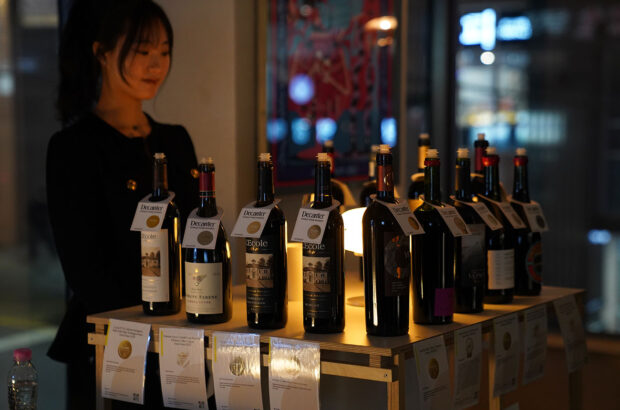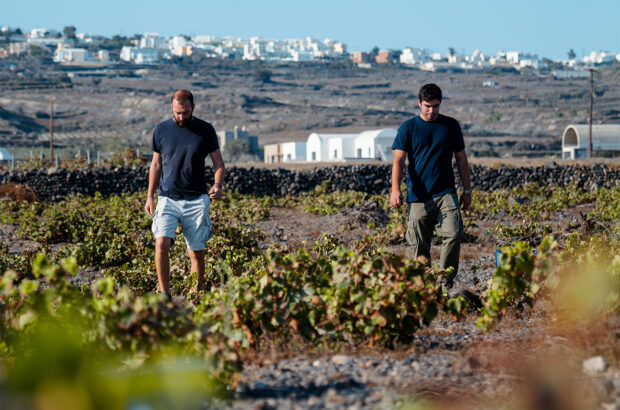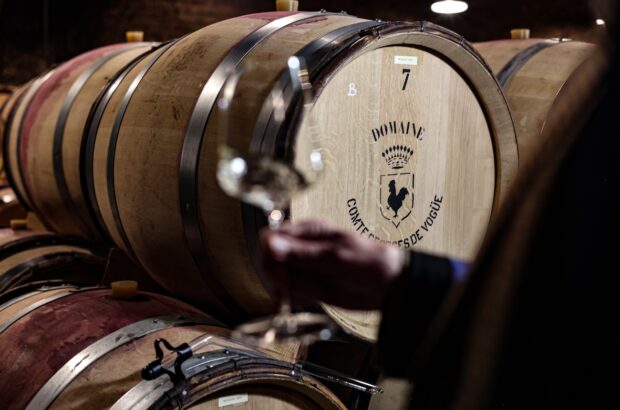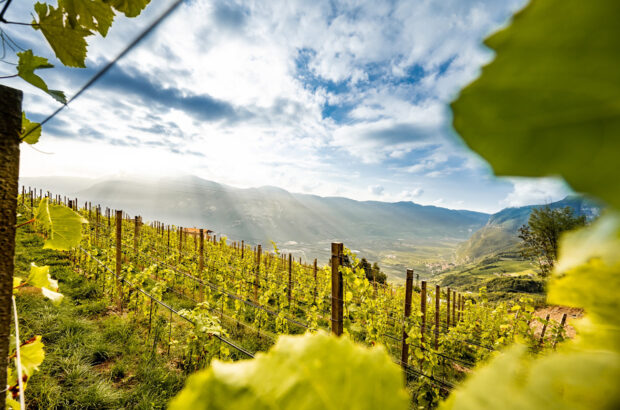Though both may be great picks to elevate a celebration, there’s a lot to distinguish Champagne and Prosecco from each other.
Geographical location, permitted grape varieties, production method and flavour profile all make a difference in understanding these two wine styles.
But let’s start with the similarities. Both Champagne and Prosecco are permitted to make rosé sparkling wines under the respective names; although for Prosecco, this was only approved in May 2020.
{"content":"PHA+VGhlIHR3byByZWdpb25zIGhhdmUgYWxzbyBiZWVuIHJlY29nbmlzZWQgYnkgVU5FU0NPIGFzIFdvcmxkIEhlcml0YWdlIHNpdGVzIGZvciB0aGVpciB2aXRpY3VsdHVyYWwgaGVyaXRhZ2UuIFRoZSBoaWxsc2lkZXMsIGhvdXNlcyBhbmQgY2VsbGFycyBvZiBDaGFtcGFnbmUgYXJvdW5kIFJlaW1zIGFuZCBFcGVybmF5IGluIDIwMTUgYW5kIHRoZSByZWdpb24gb2YgTGUgQ29sbGluZSBkZWwgUHJvc2VjY28gZGkgQ29uZWdsaWFubyBlIFZhbGRvYmJpYWRlbmUsIGluY2x1ZGluZyB0aGUgRE9DRyB3aW5lZ3Jvd2luZyBhcmVhLCBpbiAyMDE5LjwvcD4KPGhyPgo8aDMgc3R5bGU9InRleHQtYWxpZ246IGNlbnRlcjsiPkRXV0EgcmVzdWx0cyBvdXQgMTkgSnVuZSE8YnIgLz4KPGEgaHJlZj0iaHR0cHM6Ly9mdXR1cmVwbGMuc2xnbnQuZXUvb3B0aWV4dC9vcHRpZXh0ZW5zaW9uLmRsbD9JRD1KbGFKYjlQcGNNNHZtNEpybFpWRl9uSmtTRm4wcFJjdE1HeFN0VFU2WXFibTNvYVp0ZEllY29ucjU3bEdaWkxObTNETUlIQjQwbklWSVhINEJCJmFtcDtORVdTTEVUVEVSX0NPREU9WERDLVciIHRhcmdldD0iX2JsYW5rIiByZWw9Im5vb3BlbmVyIG5vcmVmZXJyZXIiPkJlIHRoZSBmaXJzdCB0byBrbm93OiBTdWJzY3JpYmUgdG8gdGhlIERXV0EgbmV3c2xldHRlcjwvYT48L2gzPgo8aHI+CjxoMz5DaGFtcGFnbmUgYW5kIFByb3NlY2NvOiBSZWdpb25zIGFuZCBncmFwZXM8L2gzPgo8cD5DaGFtcGFnbmUgY29tZXMgZnJvbSB0aGUgPHN0cm9uZz48YSBocmVmPSJodHRwczovL3d3dy5kZWNhbnRlci5jb20ubWFzdGVyLnB1YmxpYy5rZXlzdG9uZS1wcm9kLWVrcy1ldXcxLmZ1dHVyZXBsYy5lbmdpbmVlcmluZy5tYXN0ZXIucHVibGljLmtleXN0b25lLXByb2QtZWtzLWV1dzEuZnV0dXJlcGxjLmVuZ2luZWVyaW5nL3dpbmUvd2luZS1yZWdpb25zL2NoYW1wYWduZS8iIHRhcmdldD0iX2JsYW5rIiByZWw9Im5vb3BlbmVyIG5vcmVmZXJyZXIiPkNoYW1wYWduZTwvYT48L3N0cm9uZz4gcmVnaW9uIG9mIEZyYW5jZSwgbG9jYXRlZCBhcHByb3hpbWF0ZWx5IDE1MGttIG5vcnRoZWFzdCBvZiBQYXJpcy4gUHJvc2VjY28gY29tZXMgZnJvbSB0aGUgbm9ydGhlYXN0ZXJuIEl0YWxpYW4gcmVnaW9ucyBvZiA8c3Ryb25nPjxhIGhyZWY9Imh0dHBzOi8vd3d3LmRlY2FudGVyLmNvbS5tYXN0ZXIucHVibGljLmtleXN0b25lLXByb2QtZWtzLWV1dzEuZnV0dXJlcGxjLmVuZ2luZWVyaW5nLm1hc3Rlci5wdWJsaWMua2V5c3RvbmUtcHJvZC1la3MtZXV3MS5mdXR1cmVwbGMuZW5naW5lZXJpbmcvd2luZS93aW5lLXJlZ2lvbnMvdmVuZXRvLyIgdGFyZ2V0PSJfYmxhbmsiIHJlbD0ibm9vcGVuZXIgbm9yZWZlcnJlciI+VmVuZXRvPC9hPjwvc3Ryb25nPiBhbmQgPHN0cm9uZz48YSBocmVmPSJodHRwczovL3d3dy5kZWNhbnRlci5jb20ubWFzdGVyLnB1YmxpYy5rZXlzdG9uZS1wcm9kLWVrcy1ldXcxLmZ1dHVyZXBsYy5lbmdpbmVlcmluZy5tYXN0ZXIucHVibGljLmtleXN0b25lLXByb2QtZWtzLWV1dzEuZnV0dXJlcGxjLmVuZ2luZWVyaW5nL3dpbmUvd2luZS1yZWdpb25zL2ZyaXVsaS12ZW5lemlhLWdpdWxpYS8iIHRhcmdldD0iX2JsYW5rIiByZWw9Im5vb3BlbmVyIG5vcmVmZXJyZXIiPkZyaXVsaSBWZW5lemlhIEdpdWxpYTwvYT48L3N0cm9uZz4uPC9wPgo8cD48ZGl2IGNsYXNzPSJhZC1jb250YWluZXIgYWQtY29udGFpbmVyLS1tb2JpbGUiPjxkaXYgaWQ9InBvc3QtaW5saW5lLTIiIGNsYXNzPSJpcGMtYWR2ZXJ0Ij48L2Rpdj48L2Rpdj48L3A+CjxwPkNoYW1wYWduZSBjYW4gYmUgYSBibGVuZCBvciBzaW5nbGUgdmFyaWV0YWwgd2luZS4gVGhlIG1vc3QgcGxhbnRlZCBncmFwZSB2YXJpZXRpZXMgYXJlIDxzdHJvbmc+PGEgaHJlZj0iaHR0cHM6Ly93d3cuZGVjYW50ZXIuY29tLm1hc3Rlci5wdWJsaWMua2V5c3RvbmUtcHJvZC1la3MtZXV3MS5mdXR1cmVwbGMuZW5naW5lZXJpbmcubWFzdGVyLnB1YmxpYy5rZXlzdG9uZS1wcm9kLWVrcy1ldXcxLmZ1dHVyZXBsYy5lbmdpbmVlcmluZy93aW5lL2dyYXBlLXZhcmlldGllcy9waW5vdC1ub2lyLyIgdGFyZ2V0PSJfYmxhbmsiIHJlbD0ibm9vcGVuZXIgbm9yZWZlcnJlciI+UGlub3QgTm9pcjwvYT48L3N0cm9uZz4sIDxzdHJvbmc+PGEgaHJlZj0iaHR0cHM6Ly93d3cuZGVjYW50ZXIuY29tLm1hc3Rlci5wdWJsaWMua2V5c3RvbmUtcHJvZC1la3MtZXV3MS5mdXR1cmVwbGMuZW5naW5lZXJpbmcubWFzdGVyLnB1YmxpYy5rZXlzdG9uZS1wcm9kLWVrcy1ldXcxLmZ1dHVyZXBsYy5lbmdpbmVlcmluZy93aW5lL2dyYXBlLXZhcmlldGllcy9jaGFyZG9ubmF5LyIgdGFyZ2V0PSJfYmxhbmsiIHJlbD0ibm9vcGVuZXIgbm9yZWZlcnJlciI+Q2hhcmRvbm5heTwvYT48L3N0cm9uZz4gYW5kIDxzdHJvbmc+PGEgaHJlZj0iaHR0cHM6Ly93d3cuZGVjYW50ZXIuY29tLm1hc3Rlci5wdWJsaWMua2V5c3RvbmUtcHJvZC1la3MtZXV3MS5mdXR1cmVwbGMuZW5naW5lZXJpbmcubWFzdGVyLnB1YmxpYy5rZXlzdG9uZS1wcm9kLWVrcy1ldXcxLmZ1dHVyZXBsYy5lbmdpbmVlcmluZy93aW5lL2dyYXBlLXZhcmlldGllcy9waW5vdC1tZXVuaWVyLyIgdGFyZ2V0PSJfYmxhbmsiIHJlbD0ibm9vcGVuZXIgbm9yZWZlcnJlciI+UGlub3QgTWV1bmllcjwvYT48L3N0cm9uZz4sIGJ1dCBhbm90aGVyIGZvdXIgYXJlIGFsc28gcGVybWl0dGVkOiBBcmJhbmUsIFBldGl0IE1lc2xpZXIsIFBpbm90IEJsYW5jIGFuZCA8c3Ryb25nPjxhIGhyZWY9Imh0dHBzOi8vd3d3LmRlY2FudGVyLmNvbS5tYXN0ZXIucHVibGljLmtleXN0b25lLXByb2QtZWtzLWV1dzEuZnV0dXJlcGxjLmVuZ2luZWVyaW5nLm1hc3Rlci5wdWJsaWMua2V5c3RvbmUtcHJvZC1la3MtZXV3MS5mdXR1cmVwbGMuZW5naW5lZXJpbmcvd2luZS9ncmFwZS12YXJpZXRpZXMvcGlub3QtZ3Jpcy1waW5vdC1ncmlnaW8vIiB0YXJnZXQ9Il9ibGFuayIgcmVsPSJub29wZW5lciBub3JlZmVycmVyIj5QaW5vdCBHcmlzPC9hPjwvc3Ryb25nPi48L3A+CjxwPlByb3NlY2NvIGlzIG1hZGUgcHJpbmNpcGFsbHkgZnJvbSB0aGUgR2xlcmEgZ3JhcGUgdmFyaWV0eSwgd2hpY2ggbXVzdCBtYWtlIHVwIGF0IGxlYXN0IDg1JSBvZiB0aGUgYmxlbmQuIFRoZSB2YXJpZXR5IHVzZWQgdG8gYmUgY2FsbGVkIFByb3NlY2NvIGJ1dCBpbiAyMDA5IGl0cyBuYW1lIHdhcyBjaGFuZ2VkIHRvIEdsZXJhLiBBdCB0aGUgc2FtZSB0aW1lLCBQcm9zZWNjbyB3YXMgcmVnaXN0ZXJlZCBpbiBFVSBsYXcgYXMgdGhlIERPQywgcHJldmVudGluZyBvdGhlciByZWdpb25zIGZyb20gdXNpbmcgdGhlIG5hbWUsIGFsdGhvdWdoIHRoaXMgY2F1c2VkIGEgY2VydGFpbiBhbW91bnQgb2YgPHN0cm9uZz48YSBocmVmPSJodHRwczovL3d3dy5kZWNhbnRlci5jb20ubWFzdGVyLnB1YmxpYy5rZXlzdG9uZS1wcm9kLWVrcy1ldXcxLmZ1dHVyZXBsYy5lbmdpbmVlcmluZy5tYXN0ZXIucHVibGljLmtleXN0b25lLXByb2QtZWtzLWV1dzEuZnV0dXJlcGxjLmVuZ2luZWVyaW5nL3dpbmUtbmV3cy9hdXN0cmFsaWFuLXdpbmVtYWtlcnMtbG9iYnktZm9yLXByb3NlY2NvLW5hbWUtYW1pZC1ldS10YWxrcy00OTI3OTYvIiB0YXJnZXQ9Il9ibGFuayIgcmVsPSJub29wZW5lciBub3JlZmVycmVyIj5jb250cm92ZXJzeSBpbiBvdGhlciBwYXJ0cyBvZiB0aGUgd29ybGQ8L2E+PC9zdHJvbmc+LjwvcD4KPGgzPkNoYW1wYWduZSBhbmQgUHJvc2VjY286IFByb2R1Y3Rpb24gbWV0aG9kczwvaDM+CjxwPkFub3RoZXIga2V5IGRpZmZlcmVuY2UgYmV0d2VlbiB0aGVzZSB0d28gd2luZXMgaXMgdGhlIHdheSBpbiB3aGljaCB0aGV5IGFyZSBtYWRlLCBwYXJ0aWN1bGFybHkgaW4gdGVybXMgb2YgaG93IHRoZSBidWJibGVzIGFyZSBjcmVhdGVkLiBJbiBib3RoIGNhc2VzLCB0aGUgYmFzZSAoc3RpbGwpIHdpbmUgdW5kZXJnb2VzIGEgc2Vjb25kIGZlcm1lbnRhdGlvbiwgY3JlYXRpbmcgdGhlIENP4oKCIHdoaWNoIGdpdmVzIGl0IGl0cyBzcGFya2xlLjwvcD4KPGRpdiBjbGFzcz0iYWQtY29udGFpbmVyIGFkLWNvbnRhaW5lci0tbW9iaWxlIj48ZGl2IGlkPSJwb3N0LWlubGluZS0zIiBjbGFzcz0iaXBjLWFkdmVydCI+PC9kaXY+PC9kaXY+CjxwPkluIENoYW1wYWduZSwgdGhlIG3DqXRob2RlIENoYW1wZW5vaXNlIG9yIOKAmHRyYWRpdGlvbmFsIG1ldGhvZOKAmSBpcyB1c2VkIHRvIGFjaGlldmUgdGhpcy4gVGhlIGJhc2Ugd2luZSBpcyBib3R0bGVkIGFsb25nIHdpdGggeWVhc3QgYW5kIHN1Z2FycyAobGlxdWV1ciBkZSB0aXJhZ2UpLCBjYXVzaW5nIHRoZSBzZWNvbmQgZmVybWVudGF0aW9uIHRvIGhhcHBlbiBpbiB0aGUgYm90dGxlLjwvcD4KPHA+VGhlIHdpbmUgaXMgdGhlbiBsZWZ0IGluIGNvbnRhY3Qgd2l0aCB0aGUgZGVhZCB5ZWFzdCBjZWxscywgc28gdGhhdCBpdCBjYW4gbWF0dXJlLiBGb3IgYSBub24tdmludGFnZSBDaGFtcGFnbmUgdGhlIG1pbmltdW0gdGltZSBpcyAxMiBtb250aHMgKHBsdXMgdGhyZWUgZnVydGhlciBtb250aHMgYWdlaW5nIHBvc3QgZGlzZ29yZ2VtZW50KSwgd2hlcmVhcyB2aW50YWdlIENoYW1wYWduZSBtdXN0IHNwZW5kIHRocmVlIHllYXJzIG9uIGl0cyBsZWVzLjwvcD4KPGRpdiBjbGFzcz0iYWQtY29udGFpbmVyIGFkLWNvbnRhaW5lci0tbW9iaWxlIj48ZGl2IGlkPSJwb3N0LWlubGluZS00IiBjbGFzcz0iaXBjLWFkdmVydCI+PC9kaXY+PC9kaXY+CjxwPkFmdGVyIHRoaXMsIHRoZSB5ZWFzdCBuZWVkcyB0byBiZSByZW1vdmVkLiBUaGUgcmlkZGxpbmcgcHJvY2VzcyByb3RhdGVzIGFuZCB0aWx0cyB0aGUgYm90dGxlIGluIHNtYWxsIGluY3JlbWVudHMgc28gdGhhdCB0aGUgc2VkaW1lbnQgY29sbGVjdHMgYXQgdGhlIG5lY2suIFRoZSBuZWNrIG9mIHRoZSBib3R0bGUgaXMgdGhlbiBmcm96ZW4gYW5kIHRoZSBkZWFkIHllYXN0IGNlbGxzIHJlbGVhc2VkIOKAkyBhIHByb2Nlc3MgY2FsbGVkIOKAmGRpc2dvcmdlbWVudOKAmS4gTGlxdWV1ciBk4oCZZXhwZWRpdGlvbiAoYSBtaXh0dXJlIG9mIHdpbmUgYW5kIHN1Z2FyKSBpcyB1c2VkIHRvIHRvcCB1cCBhbmQgYmFsYW5jZSB0aGUgZmluYWwgd2luZSwgaW4gYSBwcm9jZXNzIGtub3duIGFzIGRvc2FnZS48L3A+CjxkaXYgY2xhc3M9ImFkLWNvbnRhaW5lciBhZC1jb250YWluZXItLW1vYmlsZSI+PGRpdiBpZD0icG9zdC1pbmxpbmUtNSIgY2xhc3M9ImlwYy1hZHZlcnQiPjwvZGl2PjwvZGl2Pgo8cD5CeSBjb250cmFzdCwgaW4gUHJvc2VjY28gdGhlIHRhbmsgbWV0aG9kIGlzIG5vcm1hbGx5IHVzZWQgZm9yIHRoZSBzZWNvbmQgZmVybWVudGF0aW9uLiBSYXRoZXIgdGhhbiBiZWluZyBib3R0bGVkLCB0aGUgYmFzZSB3aW5lIGlzIHBsYWNlZCBpbiBhIHByZXNzdXJlIHRhbmsgdG8gd2hpY2ggc3VnYXIgYW5kIHllYXN0IGFyZSBhZGRlZC4gQ0\/igoIgaXMgY3JlYXRlZCBhbmQgdGhlIHdpbmUgaXMgdGhlbiBmaWx0ZXJlZCB0byByZW1vdmUgdGhlIHNlZGltZW50IGJlZm9yZSBkb3NhZ2UgYW5kIGJvdHRsaW5nLjwvcD4KPGgzPkNoYW1wYWduZSBhbmQgUHJvc2VjY286IEZsYXZvdXIgcHJvZmlsZXM8L2gzPgo8cD5UaGVzZSB0d28gbWV0aG9kcyBvZiBwcm9kdWN0aW9uIHJlc3VsdCBpbiBxdWl0ZSBkaWZmZXJlbnQgZmxhdm91ciBwcm9maWxlcyBmb3IgdGhlc2Ugd2luZXMuPC9wPgo8cD5UaGUgZXh0ZW5kZWQgY29udGFjdCB3aXRoIHRoZSB5ZWFzdCBpbiB0aGUgdHJhZGl0aW9uYWwgbWV0aG9kIG1lYW5zIHRoYXQgQ2hhbXBhZ25lIGdlbmVyYWxseSBoYXMgbW9yZSBhdXRvbHl0aWMgZmxhdm91cnMg4oCTIGJyZWFkLCBicmlvY2hlIGFuZCB0b2FzdCwgYXMgd2VsbCBhcyBhIHJvdW5kZXIgbW91dGhmZWVsLjwvcD4KPGRpdiBjbGFzcz0iaW5qZWN0aW9uIj48L2Rpdj4KPHA+VGhlIHllYXN0IGhhcyBsZXNzIG9mIGFuIGluZmx1ZW5jZSBvbiBQcm9zZWNjbyBtYWRlIHdpdGggdGhlIHRhbmsgbWV0aG9kLCBiZWNhdXNlIHRoZXJlIGlzIG5vIGV4dGVuZGVkIGxlZXMgY29udGFjdC4gTW9zdCBQcm9zZWNjbyBpcyBtb3JlIGFib3V0IHRoZSBmcnVpdCBmbGF2b3VyIHByb2ZpbGUgb2YgdGhlIEdsZXJhIGdyYXBlIOKAkyBhc3NvY2lhdGVkIHdpdGggcGVhciwgYXBwbGUsIGhvbmV5c3Vja2xlIGFuZCBmbG9yYWwgbm90ZXMuPC9wPgo8cD5Ib3dldmVyLCBzb21lIG9mIHRoZSA8c3Ryb25nPjxhIGhyZWY9Imh0dHBzOi8vd3d3LmRlY2FudGVyLmNvbS5tYXN0ZXIucHVibGljLmtleXN0b25lLXByb2QtZWtzLWV1dzEuZnV0dXJlcGxjLmVuZ2luZWVyaW5nLm1hc3Rlci5wdWJsaWMua2V5c3RvbmUtcHJvZC1la3MtZXV3MS5mdXR1cmVwbGMuZW5naW5lZXJpbmcvZGVjYW50ZXItYmVzdC9iZXN0LXByb3NlY2NvLTg1MjE5LyIgdGFyZ2V0PSJfYmxhbmsiIHJlbD0ibm9vcGVuZXIgbm9yZWZlcnJlciI+YmVzdCBQcm9zZWNjbzwvYT48L3N0cm9uZz4gc3R5bGVzIGFyZSBtYWRlIHdpdGggdGhlIHRyYWRpdGlvbmFsIG1ldGhvZCBvciB1bmRlcmdvIGxlZXMgYWdlaW5nLCByZXN1bHRpbmcgaW4gYSBtb3JlIGNvbXBsZXggd2luZS48L3A+CjxwPgo="}







